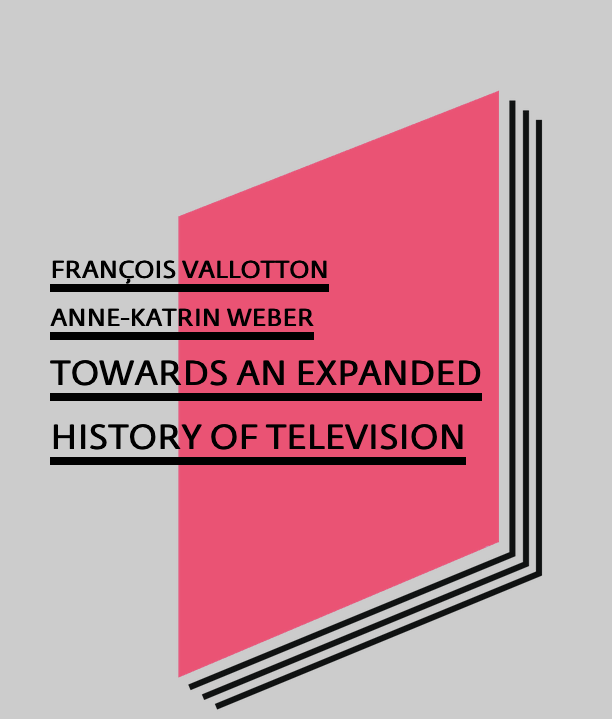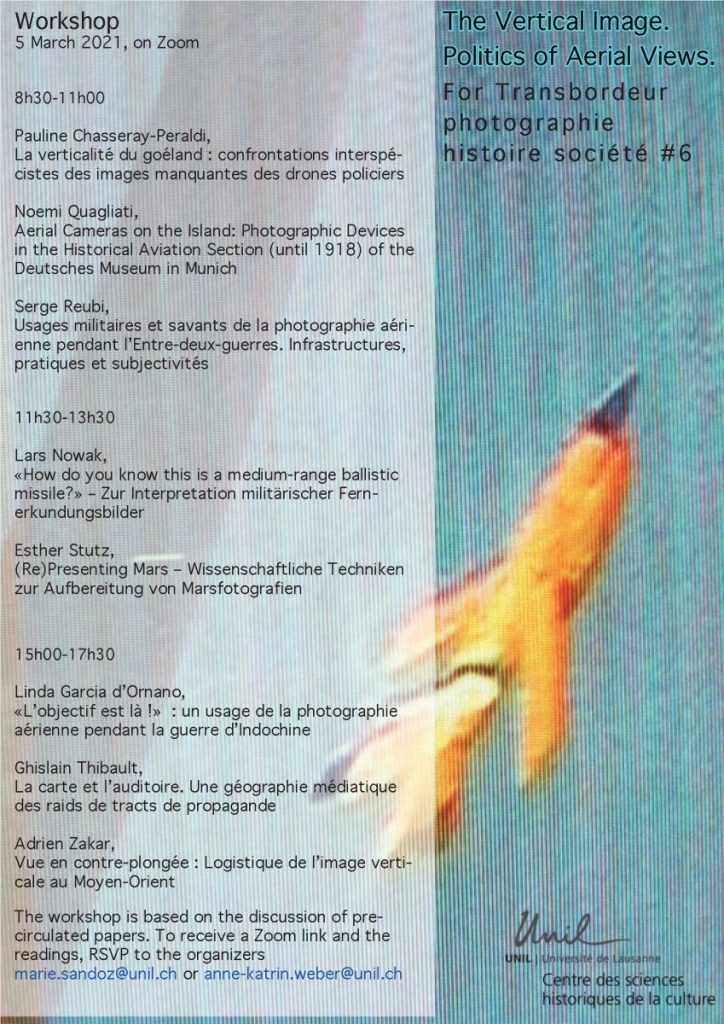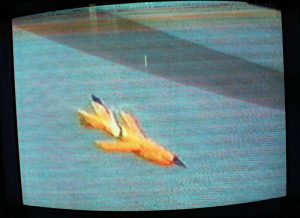The volume co-edited with François Vallotton (UNIL) is now published online in the INFOCLIO series Living Books about History:
https://livingbooksabouthistory.ch/en/book/towards-an-expanded-history-of-television

https://livingbooksabouthistory.ch/en/book/towards-an-expanded-history-of-television

Exploring the material, visual, political, and economic functions of military media, a variety of approaches to the histories of media, war, and the military have emerged in recent decades. This seminar builds on this boom in scholarship by focusing on the archaeology of audio/visual media in the military. More precisely, it asks two interrelated questions. First, we would like to explore the ways by which we might avoid the artificial boundaries between media histories across the military, civilian, and corporate spheres, which are implicit in the very notion of “military media”. What archives and what historiographical and theoretical tools are useful to think about the entangled histories of the means of mass destruction and mass entertainment?
Taking a purposefully broad approach to the concept of “audio/visual” media to encompass media technologies such as television, radio, photography, cinema, and others, we further ask what an intermedial approach to the histories of media and the military might look like. What new venues for critical scholarship are possible if we think beyond “war and cinema”, “photography and war” etc. in order to analyze the “logistics of perception”such as it is sustained through the military media assemblage?
Specific topics could include:
Before the seminar participants will be asked to prepare a short reading list on the seminar topic and select a single object, image, or archival source to discuss during the seminar. Seminar leaders will collate the reading lists and circulate prior to the seminar, highlighting several short texts from the list for preparation and discussion during the seminar. During the seminar participants will have 3-4 minutes to briefly present their selected source and how it relates to the challenges, themes and questions of the seminar. Having received these submissions in advance, seminar leaders will order the contributions with a mind to drawing out particular themes and interests of the group.


Des premières montgolfières aux drones contemporains, les dispositifs de vision aérienne génèrent une iconographie au croisement de l’expérimentation militaire, scientifique et artistique. Le numéro 6 de la revue Transbordeur, dirigé par Claus Gunti et Anne-Katrin Weber, souhaite revisiter cette histoire de la vue d’en haut en éclairant en particulier sa dimension politique et épistémologique.
Nous privilégions ainsi la notion d’« image verticale » permettant de renvoyer non seulement à un arrangement spatial spécifique, mais également de souligner les relations de pouvoir qui le soutiennent et le modélisent. À la fois représentation et matérialisation des rapports de domination coloniale et impérialiste ou de politiques de surveillance militaire, l’image verticale est productrice d’un savoir qui forge ces rapports et les rend possibles ; à l’inverse, elle peut fournir une preuve dénonçant la violence des agressions commises par des acteurs étatiques. Ainsi, nous souhaitons penser l’image verticale dans le contexte actuel marqué à la fois par la surveillance massive des populations en raison de la pandémie COVID-19 et par les mobilisations internationales récentes au nom de Black Lives Matter. Ces événements ont produit d’innombrables images verticales, des caméras de surveillance thermiques aux enregistrements des manifestant·e·s documentant la répression policière depuis « le bas ».
Le numéro 6 de Transbordeur propose de réfléchir à ce moment en investiguant les politiques et les histoires de ces images dans une perspective pluridisciplinaire.
Télécharger ici le CFP complet en format PDF.
This paper analyses the meaning of newness in television history by focusing on the French film Télévision: Oeil de demain (J. K. Raymond-Millet, 1947). It argues that the film’s futurist depiction of television veils the medium’s longue durée, and exemplifies a discursive strategy to conceal most recent technological and institutional developments, in particular those linking French television to National-Socialist occupation. The novelty discourse is instrumental to mask the many continuities between the National-Socialist Fernsehsender Paris and postwar French television, and helps to conceive of television as new media unburdened by recent history.